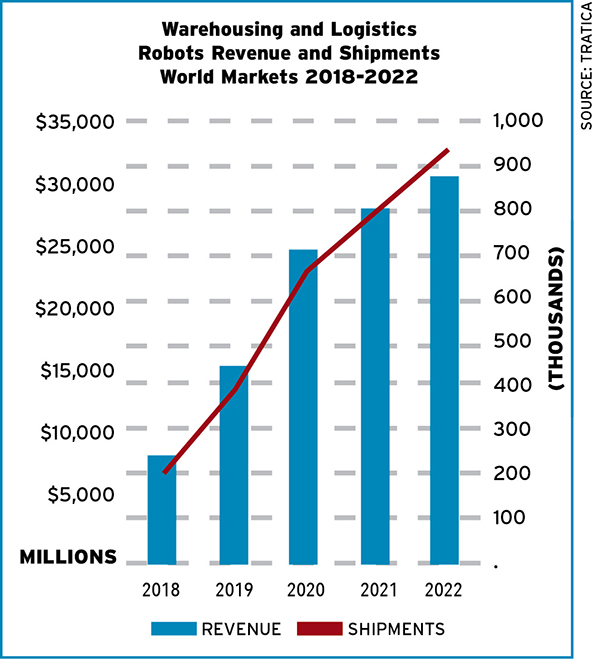Robots on the March

A growing number of warehousing and logistics companies are incorporating robots to remain competitive in a market driven in large part by consumers that demand rapid fulfillment.
At the same time, robotic warehousing and logistics technologies are advancing in capability and becoming more affordable each year. The demand for robots and the supply of advanced robotic solutions to optimize logistics processes, combined with labor shortages, have created a tipping point that could lead to widespread adoption of robots in warehouses and logistics operations to assist and displace human workers.
Tractica forecasts that worldwide shipments of warehousing and logistics robots will grow rapidly over the next five years from 194,000 units in 2018 to 938,000 units annually by 2022, with the rate of growth slowing after 2021 as many major players will have adopted robotic systems by then (see chart above). Worldwide revenue for this category will increase from $8.3 billion in 2018 to $30.8 billion in 2022, providing significant opportunities for established participants and emerging players.
"The warehousing and logistics robot market is experiencing strong growth, and supply chains are being transformed as companies replace fixed infrastructure and outdated processes with flexible, scalable robotic solutions to meet the changing demands of modern commerce," says Glenn Sanders, senior analyst, Tractica.
